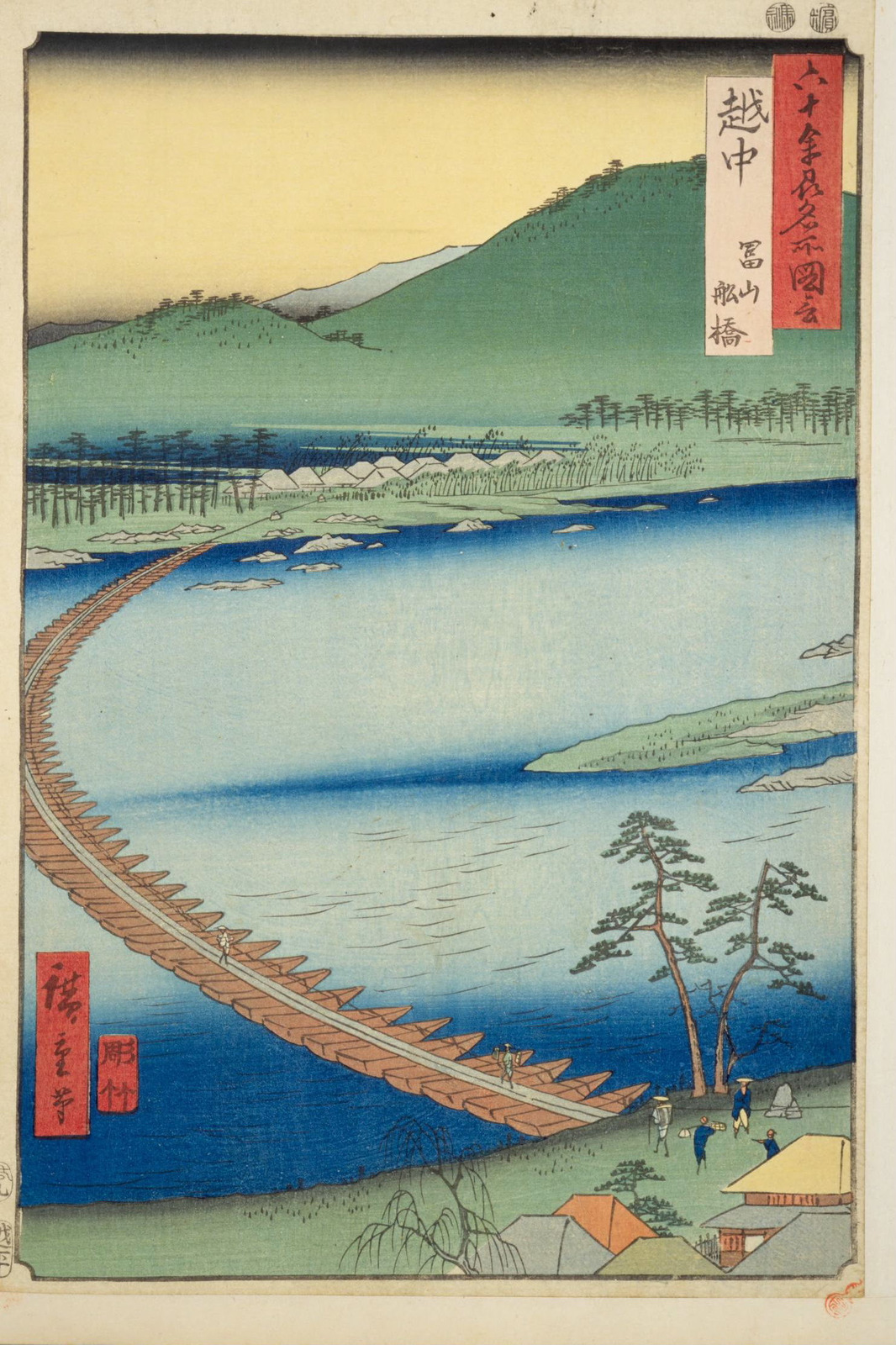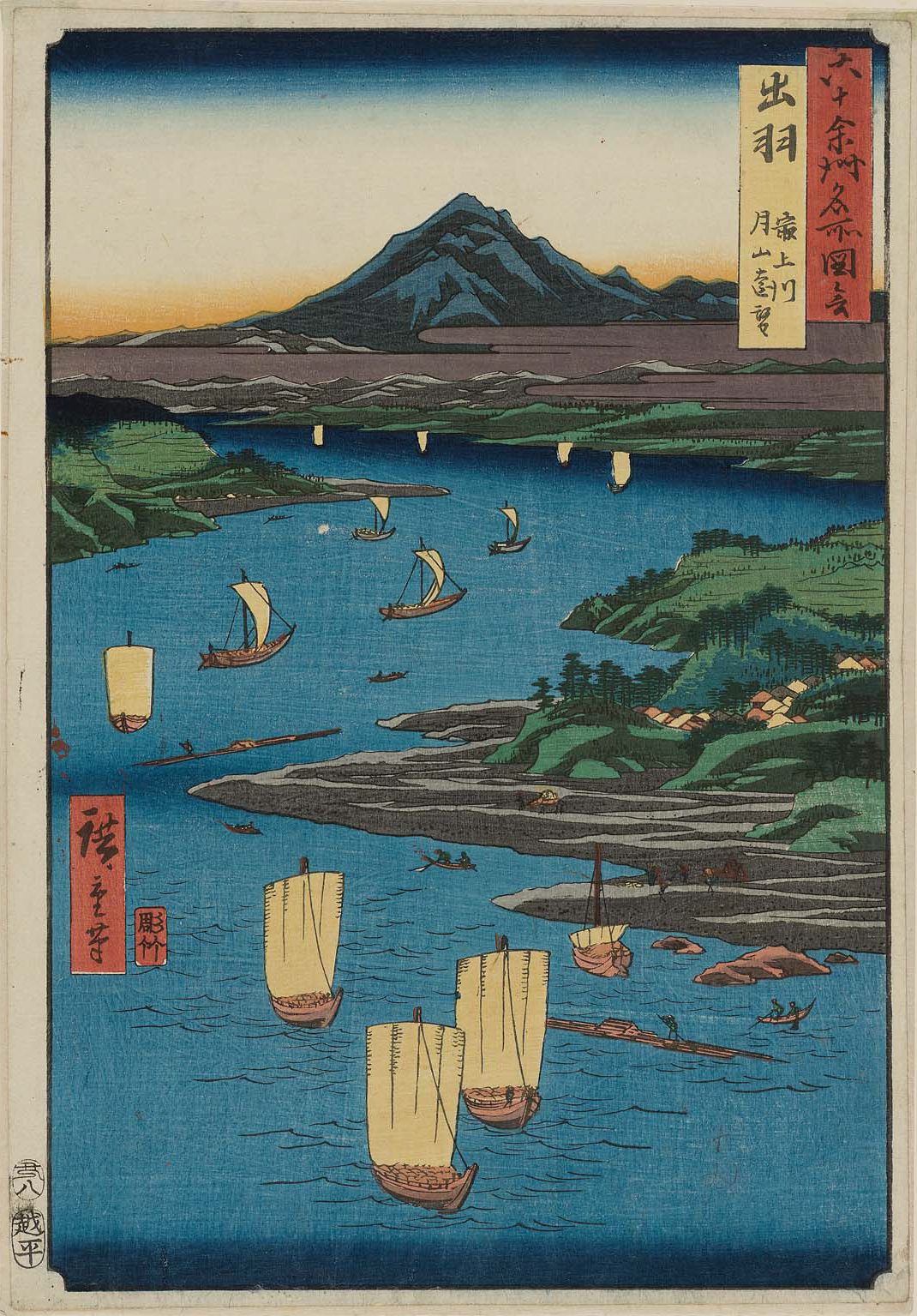|
Takayama Jin'ya
The is a surviving Edo period ''jin'ya'' which served as the Daikansho for Hida Province under the Tokugawa shogunate of Japan from 1692 to 1871. It is located in what is now Hachiken-machi of the city of Takayama in Gifu Prefecture. It has been protected as a National Historic Site since 1929. History Following the Battle of Sekigahara and the establishment of the Tokugawa shogunate, Hida Province was awarded by Tokugawa Ieyasu to Kanamori Nagachika, who became ''daimyō'' of the 38,000 '' koku'' Hida-Takayama Domain, and who built Takayama Castle. The Kanamori clan was transferred to Kaminoyama Domain in Dewa Province in 1692. As Hida was rich in resources (gold, silver and copper, as well as its famed timber), the entire province was thereafter retained as ''tenryō'' territory directly under shogunal control. Takayama Castle was destroyed; however, the ''shimoyashiki'' at the base of the castle was modified to serve as the ''daikansho'', or combined residence/office of the ... [...More Info...] [...Related Items...] OR: [Wikipedia] [Google] [Baidu] |
Takayama, Gifu
Takayama City Hall is a city located in Gifu Prefecture, Japan. , the city had an estimated population of 88,473 in 35,644 households, and a population density of 41 persons per km2. The total area of the city was making it the largest city by area in Japan. The high altitude and separation from other areas of Japan kept the area fairly isolated, allowing Takayama to develop its own culture over about a 300-year period. Etymology The city is popularly known as in reference to the old Hida Province to differentiate it from other places named Takayama. The name 'Takayama' means 'tall mountain'. Geography Takayama is located in northern Gifu Prefecture, in the heart of the Japanese Alps. Mount Hotakadake is the highest point in the city at . The city has the largest geographic area of any municipality in Japan. Neighbouring municipalities *Gifu Prefecture ** Hida ** Gujō **Gero ** Shirakawa *Nagano Prefecture ** Ōmachi **Matsumoto ** Kiso *Toyama Prefecture **Toyama *Ishika ... [...More Info...] [...Related Items...] OR: [Wikipedia] [Google] [Baidu] |
Koku
The is a Chinese-based Japanese unit of volume. 1 koku is equivalent to 10 or approximately , or about . It converts, in turn, to 100 shō and 1000 gō. One ''gō'' is the volume of the "rice cup", the plastic measuring cup that is supplied with commercial Japanese rice cookers. The ''koku'' in Japan was typically used as a dry measure. The amount of rice production measured in ''koku'' was the metric by which the magnitude of a feudal domain ('' han'') was evaluated. A feudal lord was only considered '' daimyō'' class when his domain amounted to at least 10,000 ''koku''. As a rule of thumb, one ''koku'' was considered a sufficient quantity of rice to feed one person for one year. The Chinese equivalent or cognate unit for capacity is the ''shi'' or ''dan'' ( also known as ''hu'' (), now approximately 103 litres but historically about . Chinese equivalent The Chinese ''shi'' or ''dan'' is equal to 10 ''dou'' () " pecks", 100 ''sheng'' () " pints". While the current ... [...More Info...] [...Related Items...] OR: [Wikipedia] [Google] [Baidu] |
Hida Region
is the northern portion of Gifu Prefecture in the Chūbu region of Japan.Hida Promotional Office Gifu Prefecture. Accessed June 24, 2008. The Hida region received its name because the area was formerly part of , before the formation of prefectures in Japan. The borders of this region are not officially set, but it generally consists of the following four municipalities: Takayama, Hida, Gero and [...More Info...] [...Related Items...] OR: [Wikipedia] [Google] [Baidu] |
Kura (storehouse)
are traditional Japanese storehouses. They are commonly durable buildings built from timber, stone or clay used to safely store valuable commodities. ''Kura'' in rural communities are normally of simpler construction and used for storing grain or rice. Those in towns are more elaborate, with a structural timber frame covered in a fireproof, clay outer coating. Early religious ''kura'' were built in a "log cabin" style, whilst those used later to store gunpowder were constructed from stone. Earthen ''kura'', ''dozō'' have evolved a particular set of construction techniques in order to make them relatively fireproof. History The ''kura'' storehouse was specifically used to store precious items. Other sorts of storehouses such as outbuildings (''naya'') and sheds (''koya'') were used to store more mundane items. The first ''kura'' appear during the Yayoi period (300 BC – 300 AD) and they evolved into ''takakura'' (literally ''tall storehouse'') that were built on columns ra ... [...More Info...] [...Related Items...] OR: [Wikipedia] [Google] [Baidu] |
Takayama Jinya
Takayama may refer to: People *Takayama (surname) Places *Takayama, Gifu, a city **Takayama Castle **Takayama Festival ** Takayama Jinya **Takayama Station, a railway station *Takayama, Gunma, a village *Takayama, Nagano, a village *Takayama Main Line, a railway line Objects *Takayama, a shuttle craft in the movie ''Star Trek Into Darkness'' See also * 高山 (other) * Takiyama (other) * Tamayama (other) Tamayama may refer to: * Tamayama, Iwate, a former village located in Iwate District, Iwate, Japan * Tamayama Formation, a Mesozoic geologic formation People with the surname * Tetsuji Tamayama (born 1980), Japanese actor {{disambiguation, surnam ... * Katayama, a Japanese surname {{disambiguation, geo ... [...More Info...] [...Related Items...] OR: [Wikipedia] [Google] [Baidu] |
Meiji Reformation
The , referred to at the time as the , and also known as the Meiji Renovation, Revolution, Regeneration, Reform, or Renewal, was a political event that restored practical imperial rule to Japan in 1868 under Emperor Meiji. Although there were ruling emperors before the Meiji Restoration, the events restored practical abilities and consolidated the political system under the Emperor of Japan. The goals of the restored government were expressed by the new emperor in the Charter Oath. The Restoration led to enormous changes in Japan's political and social structure and spanned both the late Edo period (often called the Bakumatsu) and the beginning of the Meiji era, during which time Japan rapidly industrialized and adopted Western ideas and production methods. Foreign influence The Japanese knew they were behind the Western powers when US Commodore Matthew C. Perry came to Japan in 1853 in large warships with armaments and technology that far outclassed those of Japan, w ... [...More Info...] [...Related Items...] OR: [Wikipedia] [Google] [Baidu] |
Etchū Province
was a province of Japan in the area that is today Toyama Prefecture in the Hokuriku region of Japan. Etchū bordered on Noto and Kaga Provinces to the west, Shinano and Hida Provinces to the south, Echigo Province to the east and the Sea of Japan to the north. Its abbreviated form name was . History was an ancient province of Japan and is listed as one of the original provinces in the '' Nihon Shoki''. The region as a whole was sometimes referred to as . In 701 AD, per the reforms of the Taihō Code, Koshi was divided into three separate provinces: Echizen, Etchū, and Echigo. However, in 702 AD, the four western districts of Etchū Province (Kubiki, Kosi, Uonuma and Kambara) were transferred to Echigo Province. Etchū annexed Noto Province in 741 AD, but Noto was separated out again in 757 AD. In 746 AD, the noted poet Ōtomo no Yakamochi became ''Kokushi'', and left many references to the region in the poetic anthology ''Man'yōshū''. The Nara period provincial ... [...More Info...] [...Related Items...] OR: [Wikipedia] [Google] [Baidu] |
Echizen Province
was a province of Japan in the area that is today the northern portion of Fukui Prefecture in the Hokuriku region of Japan. Echizen bordered on Kaga, Wakasa, Hida, and Ōmi Provinces. It was part of Hokurikudō Circuit. Its abbreviated form name was . History Ancient and classical Echizen was an ancient province of Japan and is listed as one of the original provinces in the '' Nihon Shoki''. The region as a whole was sometimes referred to as . In 507, during a succession crisis, the king of Koshi was chosen to become the 26th emperor of Japan, Emperor Keitai. In 701 AD, per the reforms of the Taihō Code, Koshi was divided into three separate provinces: Echizen, Etchū, and Echigo. The original Echizen included all of what is now Ishikawa Prefecture. In 718 A.D., four districts of northern Echizen ( Hakui District, Noto District (also called Kashima District), Fugeshi District and Suzu District), were separated to form Noto Province. During the Nara period, the p ... [...More Info...] [...Related Items...] OR: [Wikipedia] [Google] [Baidu] |
Mino Province
was a province of Japan in the area of Japan that is today southern Gifu Prefecture. Mino was bordered by Ōmi to the west, Echizen and Hida to the north, and Shinano to the east, and Ise, Mikawa, and Owari to the south. Its abbreviated form name was . Under the ''Engishiki'' classification system, Mino was ranked as one of the 13 "great countries" (大国) in terms of importance, and one of the "near countries" (近国) in terms of distance from the capital. The provincial capital and '' ichinomiya'' were located in what is now the town of Tarui. Historical record "Mino" is an ancient place name, and appears in '' mokkan'' wooden tags from the ruins of Asuka-kyō, Fujiwara-kyō, and other ancient sites, but using the ''kanji'' "三野国". Per the '' Kujiki'', there were originally three separate countries in Mino, centered around what is now Ōgaki, Ōno, and Kakamigahara. Each had its own '' Kuni no miyatsuko'', and together with Motosu (in eastern Gifu) a ... [...More Info...] [...Related Items...] OR: [Wikipedia] [Google] [Baidu] |
Tenryō
The Tokugawa shogunate (, Japanese 徳川幕府 ''Tokugawa bakufu''), also known as the , was the military government of Japan during the Edo period from 1603 to 1868. Nussbaum, Louis-Frédéric. (2005)"''Tokugawa-jidai''"in ''Japan Encyclopedia'', p. 978.Nussbaum"''Edo-jidai''"at p. 167. The Tokugawa shogunate was established by Tokugawa Ieyasu after victory at the Battle of Sekigahara, ending the civil wars of the Sengoku period following the collapse of the Ashikaga shogunate. Ieyasu became the ''shōgun,'' and the Tokugawa clan governed Japan from Edo Castle in the eastern city of Edo (Tokyo) along with the ''daimyō'' lords of the ''samurai'' class.Nussbaum"Tokugawa"at p. 976. The Tokugawa shogunate organized Japanese society under the strict Tokugawa class system and banned most foreigners under the isolationist policies of ''Sakoku'' to promote political stability. The Tokugawa shoguns governed Japan in a feudal system, with each ''daimyō'' administering a '' han'' (f ... [...More Info...] [...Related Items...] OR: [Wikipedia] [Google] [Baidu] |
Dewa Province
was a province of Japan comprising modern-day Yamagata Prefecture and Akita Prefecture, except for the city of Kazuno and the town of Kosaka. Dewa bordered on Mutsu and Echigō Provinces. Its abbreviated form name was . History Early period Prior to the Asuka period, Dewa was inhabited by Ainu or Emishi tribes, and was effectively outside of the control of the Yamato dynasty. Abe no Hirafu conquered the native Emishi tribes at what are now the cities of Akita and Noshiro in 658 and established a fort on the Mogami River. In 708 AD was created within Echigō Province. The area of Dewa District was roughly that of the modern Shōnai area of Yamagata Prefecture, and was gradually extended to the north as the Japanese pushed back the indigenous people of northern Honshū. Dewa District was promoted to the status of a province () in 712 AD, and gained Okitama and Mogami Districts, formerly part of Mutsu Province. A number of military expeditions were sent to the area, with ... [...More Info...] [...Related Items...] OR: [Wikipedia] [Google] [Baidu] |





